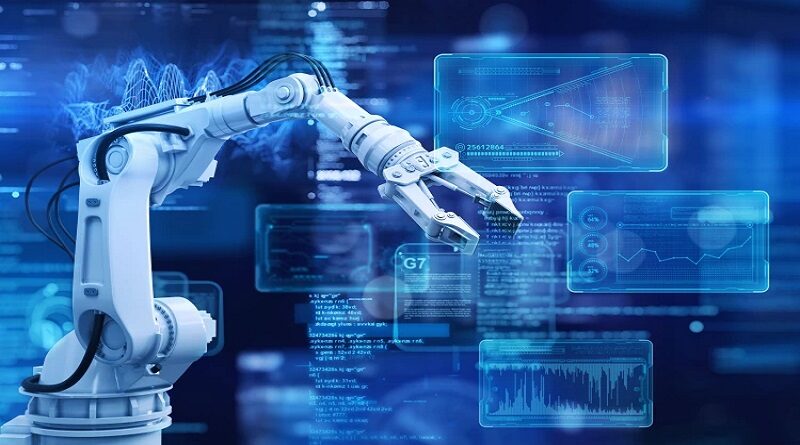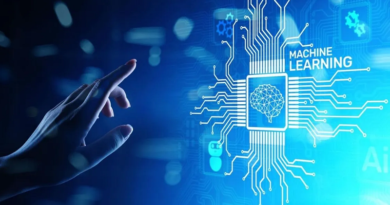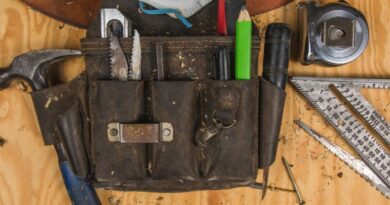How AI-driven robots and drones bring cognitive intelligence to Industry 4.0
Over the past few years, smart manufacturing initiatives such as digital twins and the internet of things (IoT) has caused Industry 4.0 the trend toward digital transformation in manufacturing and industrial sectors to explode. However, robots and drones tasked with visually inspecting machines haven’t yet seen the same growth. That is set to change in a big way.
The robots, drones and cameras that inspect machines to perform predictive maintenance and relay analog information to operations staff can now function autonomously. Even better the longer they’re at their jobs, the better they do.
AI and machine learning tools bestow “moving inspection systems” that is, robots and drones with the capability to read the analog output from industrial machines that haven’t been digitized. In this way, they act as a bridge between Industry 4.0 and the analog age it will replace.
With cognitive intelligence, robots and drones can make proactive decisions.” And, he added, this is still early days. We expect it to be standard for Industry 4.0 in the next five years,” Bill Ray, Vp and analyst, emerging technologies, and trends at Gartner
In fact, Gartner expects asset inspection and human augmentation (helping out human inspectors) to be the fastest growing use of robotics. The inspection robots market size reached $940 million in 2020, according to a report from Allied Market Research. The report predicts the industry will grow at 31 percent to reach $1.4 billion by 2030.
Cognitive intelligence for industrial robot and drone inspectors
Ray’s words underscore today’s announcement from Florida-based Levatas that it has raised $5.5 million in a seed round led by Castellan Group. The company provides cognitive intelligence for automating industrial inspection equipment. It does not make robots, drones, or vision systems. Instead, it partners with those makers to instill equipment with “cognitive intelligence,” Chris Nielsen, CEO of Levatas
The Levatas software guides these autonomous systems to learn how to do the everyday, mundane operational tasks that keep manufacturers running. For example, they learn to read gauges and to inspect and report abnormal temperature changes. Over time, through the use of machine learning, cognitive machines get better and better at their jobs.
The company competes with other makers of robotic cognitive intelligence systems for a piece of the growing industry. Levites boasts annual revenues at around $21 million. Competitors include makers of robotics inspection systems for smaller businesses, including Stradigi AI, Read Sense, Motion Cloud and Vicenza.
Levites also competes with companies that have a much larger share of the smart robotics inspection sector, including Karsh Hagan, with annual revenues of about $19 million and industry giant Proffer, which returns annual revenues around $132 million.
Proactive decisions change how inspections are done
This summer, the company plans to roll out a new feature: change detection. Inspection systems will be able to report negative changes in the plant environment, such as a missing fire extinguisher.
The Levites system results in higher efficiencies, more uptime, safer workplaces, and measurable ROI, “We sit at the heart of Industry 4.0, at the intersection of advanced robotics and inspection systems.”
Levitas-trained robots, drones and vision systems are already in place at automakers, oil refineries, energy producers and a large U.S. brewery.
That is precisely the kind of growth Ray expects to see in the future for cognitive intelligence. It has the potential to take inspection and other plant operations to a different level.
You can imagine a robot inspecting the outside of a building and it sees a wet patch, Maybe AI will highlight the patch, but the drone knows it needs to fly in closer and maybe change the angle to see the patch.” These proactive decisions, totally changes the inspection mission.” Chris Nielsen, CEO of Levatas
Analog-reading robots help improve efficiency
This kind of feedback can be folded into Industry 4.0, which will digitize the entire factory floor, using data returned by everything from sensors to conveyor belts to optimize plant performance. But many factories haven’t digitized every last machine. Upgrades like that would be way too costly especially when analog machines still work fine and would mean significant downtime.
That was true for Global Foundries, one of the world’s leading semiconductor manufacturers, which uses Boston Dynamics’ ‘Spot’ robots to improve manufacturing efficiency with help from Levatas.
Global Foundries has around 2000 filter pumps that would cost millions to upgrade to digital sensors. The company put a roving robot on the job with mobile sensors to spot pump malfunctions that, if left unattended, could cost hundreds of thousands of dollars in repairs and downtimes.
As Industry 4.0 advances, these analog-reading robots like Spot won’t be pushed out of their jobs. Organizations will simply find other ways to put their cognitive intelligence to work.




